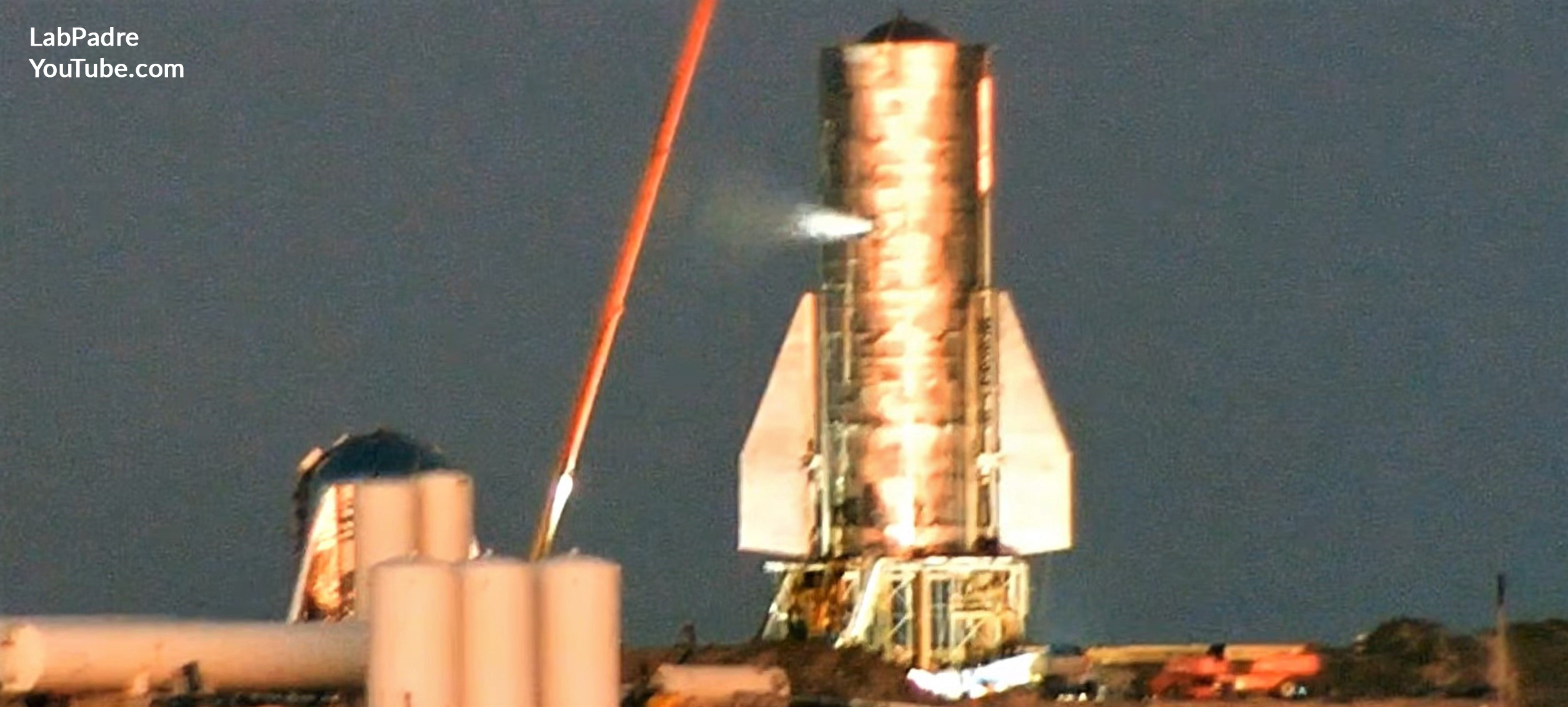
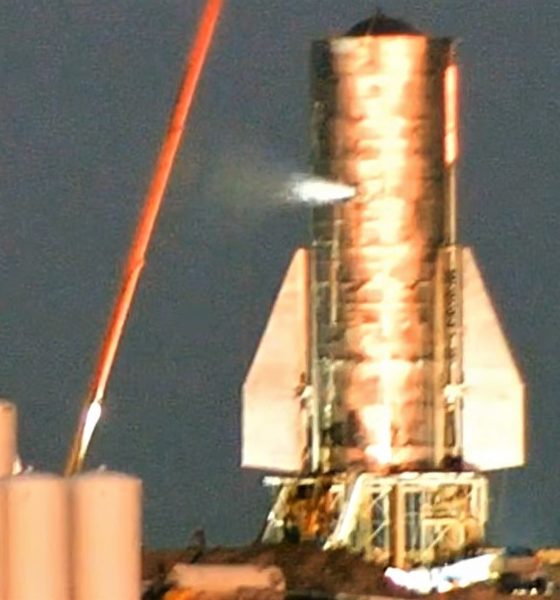
News
SpaceX’s Starship comes to life for the first time in lead-up to launch debut
For the first time ever, SpaceX has pressurized Starship Mk1’s building-sized propellant tanks, a critical test that culminated in the rocket prototype essentially taking its first ‘breaths’.
An anthropomorphization sometimes used to describe the venting launch vehicles often exhibit while during and after fueling, Starship Mk1’s so-called ‘breaths’ occurred around 5:59 pm CST (23:59 UTC). Those first vents came after roughly an hour or two spent performing several different pressurization cycles, observable due to the fact that Starship’s stainless steel tanks visibly smoothed out as pressure increased.
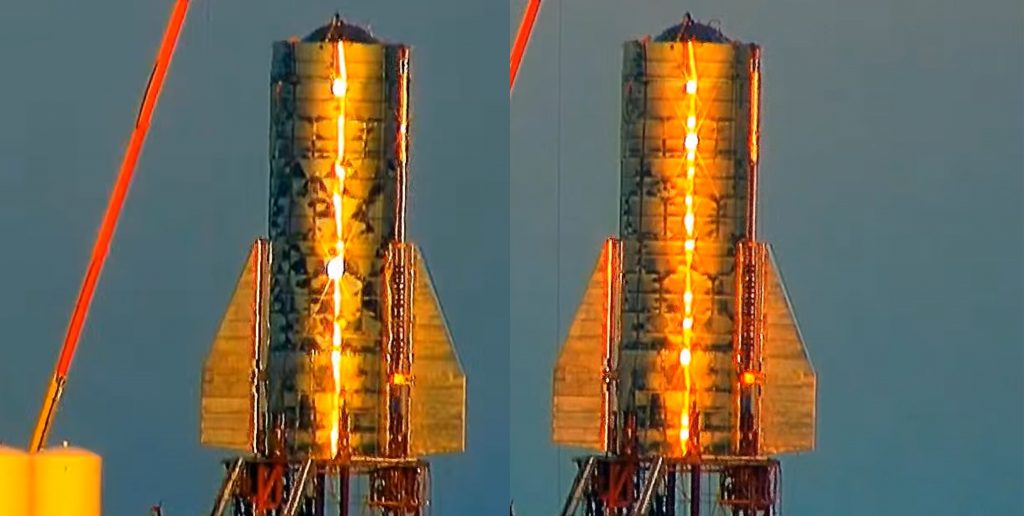
Due to the typical distances Starship is viewed from and the nature of the mirror-finished stainless steel SpaceX has chosen to build the next-generation launch vehicle out of, the exterior of Starship prototypes can produce a reflection that looks bumpy and disjointed. This has lead many a layperson to incorrectly assume that SpaceX’s Starship prototypes are thus shoddily built. In reality, viewed from afar, the tiniest hint of surface heterogeneity on a mirror can dramatically change what is reflected on its surface.
Even at the thinness of Starship Mk1’s liquid oxygen and methane tanks, stainless steel is still extremely strong, but pressurizing the vehicle’s tanks can clearly counteract a significant portion of the slight imperfections in their curvature.
Although it’s now clear that SpaceX did in fact perform some kind of pressurization test with Starship Mk1, it remains to be seen what exactly the nature of that testing was. First and foremost, SpaceX did establish significant roadblocks almost six hours before testing began, and company workers vacated the launch site several hours before visible Starship pressurization and venting. Fairly soon after that vent, workers returned to the pad and may or may not have been present during additional (but more subdued) venting activity.
Most importantly, November 18th’s testing featured a sum total of zero visible activity at SpaceX’s nearby flare stack, a mechanism used to burn waste methane gas to prevent dangerous buildups at worksites (or launch pads). This almost certainly means that methane (gaseous or liquid) played no role in pressurizing Starship Mk1’s propellant tanks.
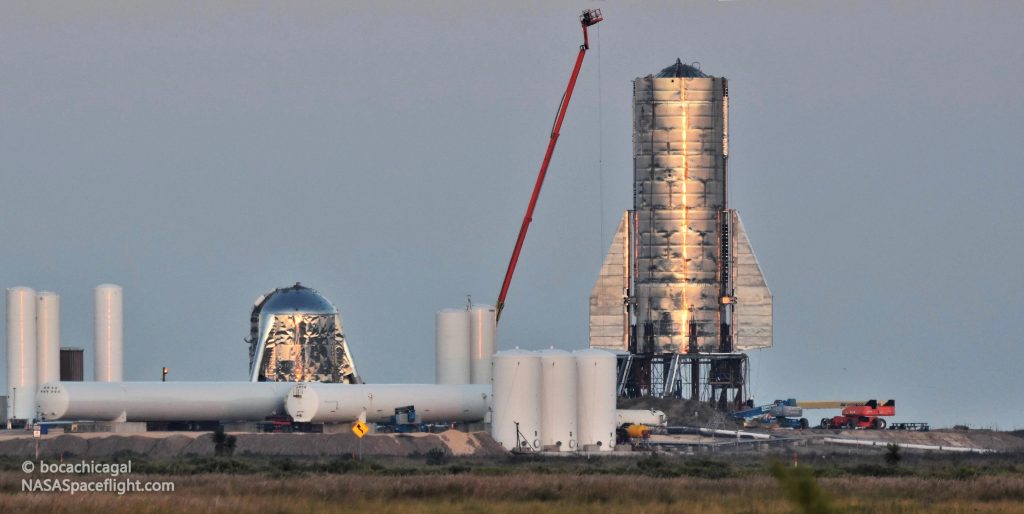
Altogether, that likely means that Monday’s proof test was not a wet dress rehearsal (WDR), a term used to describe the process of testing a launch vehicle by fully fueling it and performing a countdown identical to a real launch – but without engine ignition or liftoff. Instead, SpaceX likely began the day’s testing by pressurizing Starship several times with a neutral gas like nitrogen or helium, while gaseous oxygen is also a possibility but is significantly less likely. Simply by using pressure sensors on Starship and knowing the volume of gas that is being loaded, SpaceX could likely determine whether the prototype has any leaks.
The major vent around 6 pm local time could have simply been Starship venting that pressurant gas, which would explain why there was just a single large, observable vent. When dealing with cryogenic liquid propellant, those supercool liquids gradually heat up, causing a portion to boil and turn into gas, gas that launch vehicles then vent intermittently to prevent overpressure events (i.e. explosions). Starship Mk1 only visibly vented once, although there may have also been some additional venting even after technicians returned to the launch site (another sign that the pressurant was neither toxic or combustible).
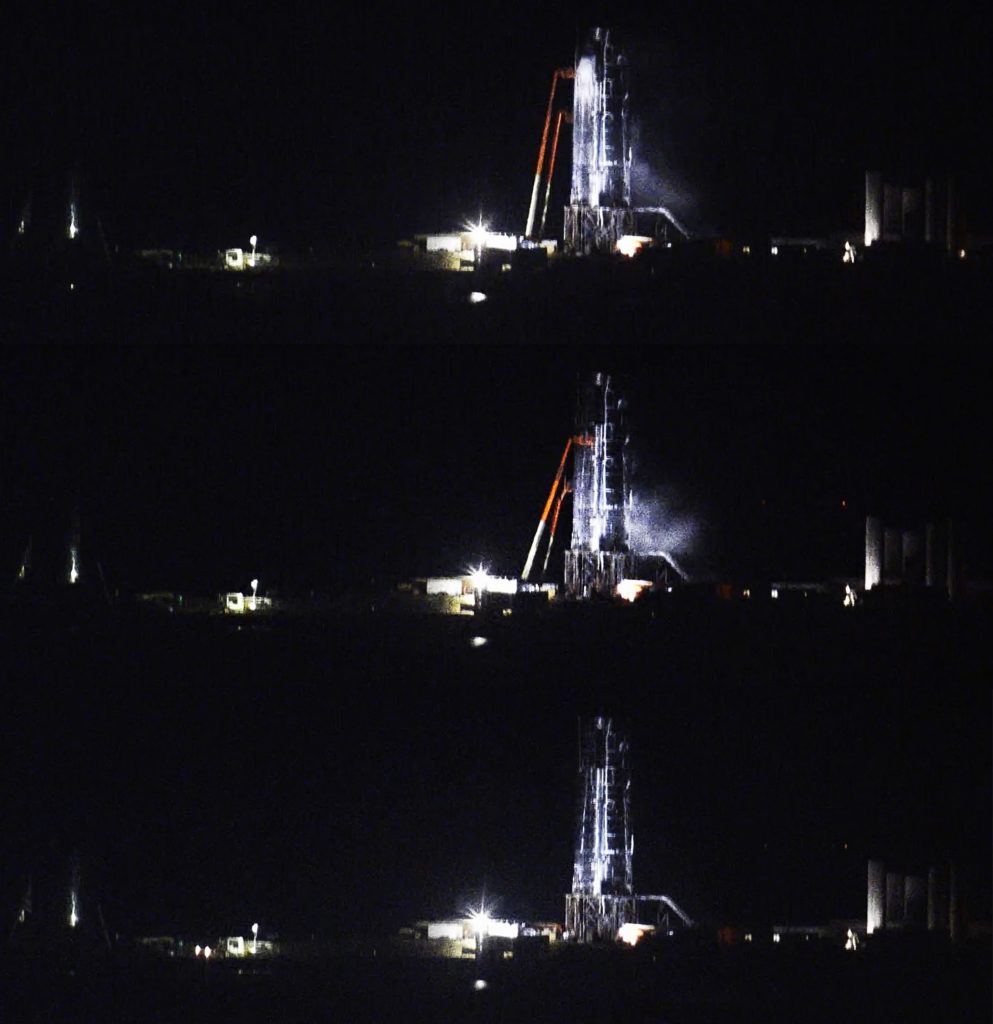
Oddly, shortly after SpaceX workers returned to the launch pad, they appeared to begin spraying down Starship Mk1 with a large volume of water or foam, producing clouds of mist as large as Starship itself. This came as a total surprise and why it’s being done is entirely unclear. Possible explanations include simply rinsing Starship (but why and why now?), checking its tanks for leaks, applying industrial quantities of WD40 (used to protect stainless steel from rust), or maybe even testing how Starship stands up to ice (extremely unlikely as it would need to be filled with a cryogenic liquid to be cold enough).
Perhaps the morning light will bring some answers. All things considered, as long as the mysterious spraying is not indicative of any serious issues or concerns with Starship Mk1, SpaceX may now be ready to put the prototype through a true propellant loading test, potentially filling its tanks with as much as 1200 metric tons (2.65 million pounds) of liquid oxygen and methane. If or when Starship passes that test, it’s next trial will be the very first triple-Raptor-engine static fire test. For now, we wait.
Check out Teslarati’s Marketplace! We offer Tesla accessories, including for the Tesla Cybertruck and Tesla Model 3.

News
Tesla FSD fleet is nearing 7 billion total miles, including 2.5 billion city miles
As can be seen on Tesla’s official FSD webpage, vehicles equipped with the system have now navigated over 6.99 billion miles.

Tesla’s Full Self-Driving (Supervised) fleet is closing in on almost 7 billion total miles driven, as per data posted by the company on its official FSD webpage.
These figures hint at the massive scale of data fueling Tesla’s rapid FSD improvements, which have been quite notable as of late.
FSD mileage milestones
As can be seen on Tesla’s official FSD webpage, vehicles equipped with the system have now navigated over 6.99 billion miles. Tesla owner and avid FSD tester Whole Mars Catalog also shared a screenshot indicating that from the nearly 7 billion miles traveled by the FSD fleet, more than 2.5 billion miles were driven inside cities.
City miles are particularly valuable for complex urban scenarios like unprotected turns, pedestrian interactions, and traffic lights. This is also the difference-maker for FSD, as only complex solutions, such as Waymo’s self-driving taxis, operate similarly on inner-city streets. And even then, incidents such as the San Francisco blackouts have proven challenging for sensor-rich vehicles like Waymos.
Tesla’s data edge
Tesla has a number of advantages in the autonomous vehicle sector, one of which is the size of its fleet and the number of vehicles training FSD on real-world roads. Tesla’s nearly 7 billion FSD miles then allow the company to roll out updates that make its vehicles behave like they are being driven by experienced drivers, even if they are operating on their own.
So notable are Tesla’s improvements to FSD that NVIDIA Director of Robotics Jim Fan, after experiencing FSD v14, noted that the system is the first AI that passes what he described as a “Physical Turing Test.”
“Despite knowing exactly how robot learning works, I still find it magical watching the steering wheel turn by itself. First it feels surreal, next it becomes routine. Then, like the smartphone, taking it away actively hurts. This is how humanity gets rewired and glued to god-like technologies,” Fan wrote in a post on X.
News
Tesla starts showing how FSD will change lives in Europe
Local officials tested the system on narrow country roads and were impressed by FSD’s smooth, human-like driving, with some calling the service a game-changer for everyday life in areas that are far from urban centers.

Tesla has launched Europe’s first public shuttle service using Full Self-Driving (Supervised) in the rural Eifelkreis Bitburg-Prüm region of Germany, demonstrating how the technology can restore independence and mobility for people who struggle with limited transport options.
Local officials tested the system on narrow country roads and were impressed by FSD’s smooth, human-like driving, with some calling the service a game-changer for everyday life in areas that are far from urban centers.
Officials see real impact on rural residents
Arzfeld Mayor Johannes Kuhl and District Administrator Andreas Kruppert personally tested the Tesla shuttle service. This allowed them to see just how well FSD navigated winding lanes and rural roads confidently. Kruppert said, “Autonomous driving sounds like science fiction to many, but we simply see here that it works totally well in rural regions too.” Kuhl, for his part, also noted that FSD “feels like a very experienced driver.”
The pilot complements the area’s “Citizen Bus” program, which provides on-demand rides for elderly residents who can no longer drive themselves. Tesla Europe shared a video of a demonstration of the service, highlighting how FSD gives people their freedom back, even in places where public transport is not as prevalent.
What the Ministry for Economic Affairs and Transport says
Rhineland-Palatinate’s Minister Daniela Schmitt supported the project, praising the collaboration that made this “first of its kind in Europe” possible. As per the ministry, the rural rollout for the service shows FSD’s potential beyond major cities, and it delivers tangible benefits like grocery runs, doctor visits, and social connections for isolated residents.
“Reliable and flexible mobility is especially vital in rural areas. With the launch of a shuttle service using self-driving vehicles (FSD supervised) by Tesla in the Eifelkreis Bitburg-Prüm, an innovative pilot project is now getting underway that complements local community bus services. It is the first project of its kind in Europe.
“The result is a real gain for rural mobility: greater accessibility, more flexibility and tangible benefits for everyday life. A strong signal for innovation, cooperation and future-oriented mobility beyond urban centers,” the ministry wrote in a LinkedIn post.
News
Tesla China quietly posts Robotaxi-related job listing
Tesla China is currently seeking a Low Voltage Electrical Engineer to work on circuit board design for the company’s autonomous vehicles.

Tesla has posted a new job listing in Shanghai explicitly tied to its Robotaxi program, fueling speculation that the company is preparing to launch its dedicated autonomous ride-hailing service in China.
As noted in the listing, Tesla China is currently seeking a Low Voltage Electrical Engineer to work on circuit board design for the company’s autonomous vehicles.
Robotaxi-specific role
The listing, which was shared on social media platform X by industry watcher @tslaming, suggested that Tesla China is looking to fill the role urgently. The job listing itself specifically mentions that the person hired for the role will be working on the Low Voltage Hardware team, which would design the circuit boards that would serve as the nervous system of the Robotaxi.
Key tasks for the role, as indicated in the job listing, include collaboration with PCB layout, firmware, mechanical, program management, and validation teams, among other responsibilities. The role is based in Shanghai.
China Robotaxi launch
China represents a massive potential market for robotaxis, with its dense urban centers and supportive policies in select cities. Tesla has limited permission to roll out FSD in the country, though despite this, its vehicles have been hailed as among the best in the market when it comes to autonomous features. So far, at least, it appears that China supports Tesla’s FSD and Robotaxi rollout.
This was hinted at in November, when Tesla brought the Cybercab to the 8th China International Import Expo (CIIE) in Shanghai, marking the first time that the autonomous two-seater was brought to the Asia-Pacific region. The vehicle, despite not having a release date in China, received a significant amount of interest among the event’s attendees.








